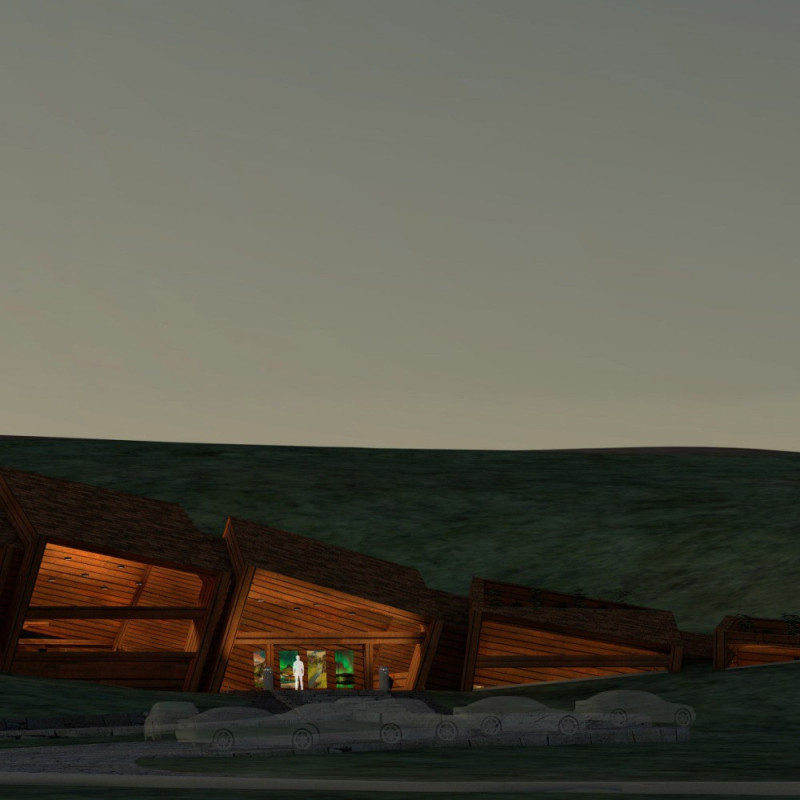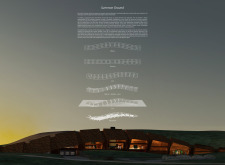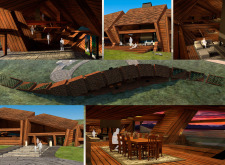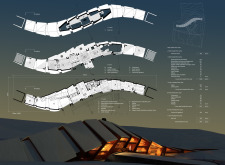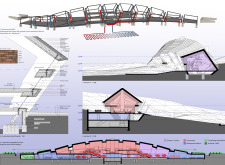5 key facts about this project
At its core, "Summon Ground" operates as a community hub designed to accommodate a range of activities, from gatherings to educational workshops. The architecture reflects a thoughtful understanding of the local culture and ecological setting, which informs the choice of materials, forms, and spatial organization. This project stands out due to its emphasis on creating flexible spaces that can adapt to diverse uses, reflecting the needs of the community it serves.
The architectural design employs curvilinear forms that are reminiscent of natural landscapes, inviting a dialogue between the built environment and its surroundings. The arrangement of spaces is intentional, allowing for a seamless flow between different areas while promoting interactions among users. The wave-like configuration of the building encourages a sense of unity and connectedness, embodying the spirit of community living.
Materiality plays a crucial role in the overall expression of "Summon Ground." The use of wood in various species—such as cherry, maple, and oak—introduces warmth and a tactile quality that enhances the user experience. This choice not only aligns with sustainability principles by using locally sourced materials but also grounds the architecture within its site context. Concrete serves as a foundational element, providing structural integrity that supports the organic forms throughout the design. Additionally, the inclusion of steel offers robustness and modernity, while expansive glass façades facilitate natural light penetration and strengthen connections between interior spaces and the exterior environment.
The project features well-defined communal areas, including lounges and dining spaces, designed to accommodate both intimate gatherings and larger events. These spaces are strategically integrated to promote social interactions, merging indoor and outdoor environments for an enriched user experience. The native landscaping surrounding the building enhances the visual appeal and ecological integration, while also serving practical functions as community gardens or recreational spaces.
Circulation within "Summon Ground" has been carefully considered to enhance ease of movement among various sections. This design strategy ensures that users naturally flow from one area to another, reinforcing a sense of belonging while promoting a communal atmosphere. The thoughtful layout of pathways and communal zones encourages engagement, facilitating connections that strengthen community ties.
Recognizing the importance of sustainability, "Summon Ground" incorporates innovative systems such as geothermal heating and cooling. These features showcase a commitment to energy efficiency and environmental stewardship, aligning with contemporary architectural practices that prioritize sustainable design. Additionally, the design harnesses natural ventilation and daylighting, minimizing reliance on artificial lighting and reducing energy consumption.
Overall, "Summon Ground" represents a comprehensive approach to architecture that melds functionality with cultural and ecological consciousness. Its unique design strategies emphasize the interconnection of community life and the environment, fostering a space where individuals can gather, engage, and thrive. The thoughtful integration of materials, forms, and sustainable practices reflects a deep respect for both the local context and the aspirations of its users.
For those interested in delving deeper into the architectural nuances of this project, exploring the architectural plans, sections, and designs will provide further insights into its innovative ideas and design outcomes. It encourages engagement not just with the physical space but with an architectural philosophy that seeks to enrich community dynamics and environmental well-being.


